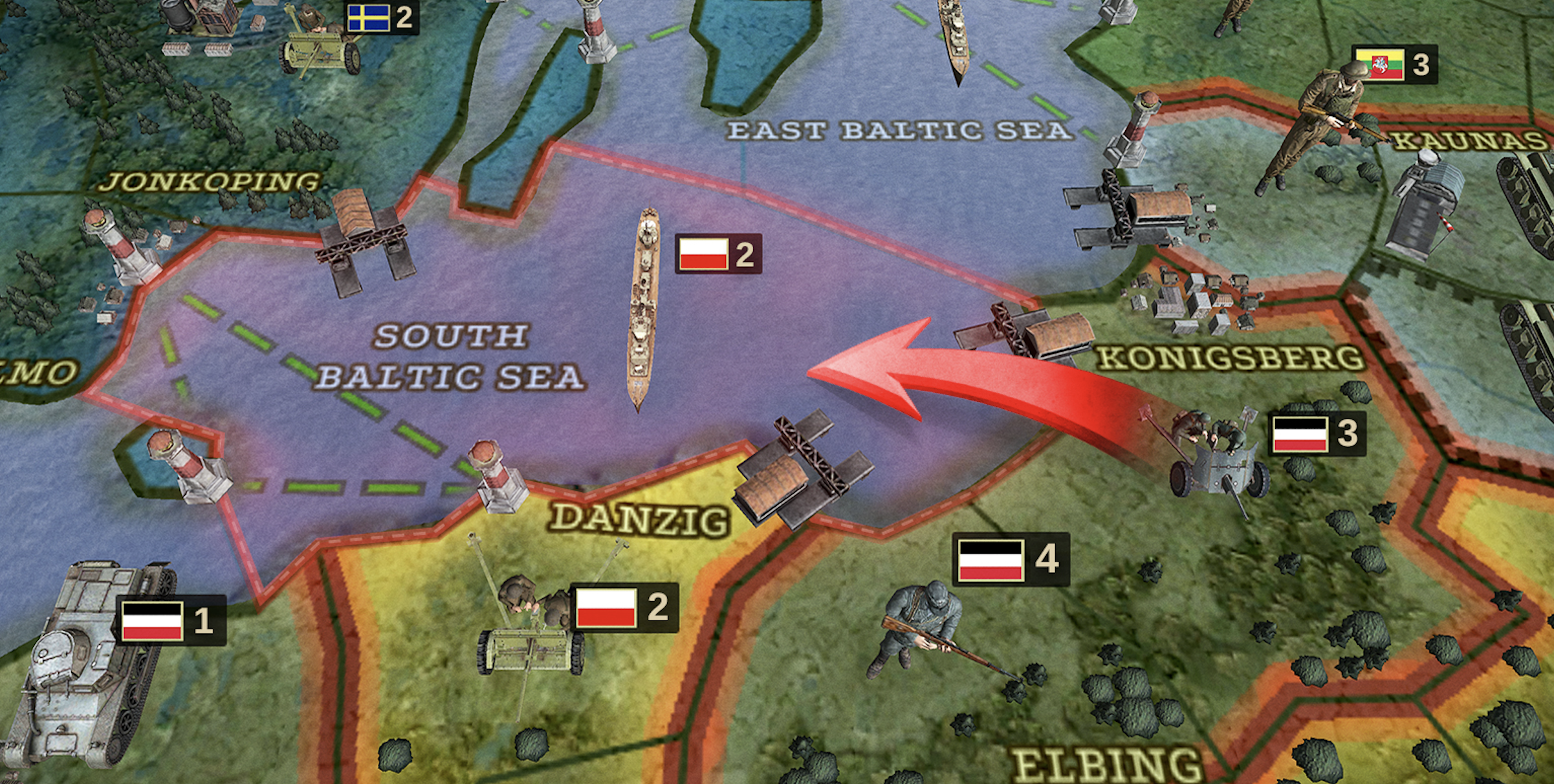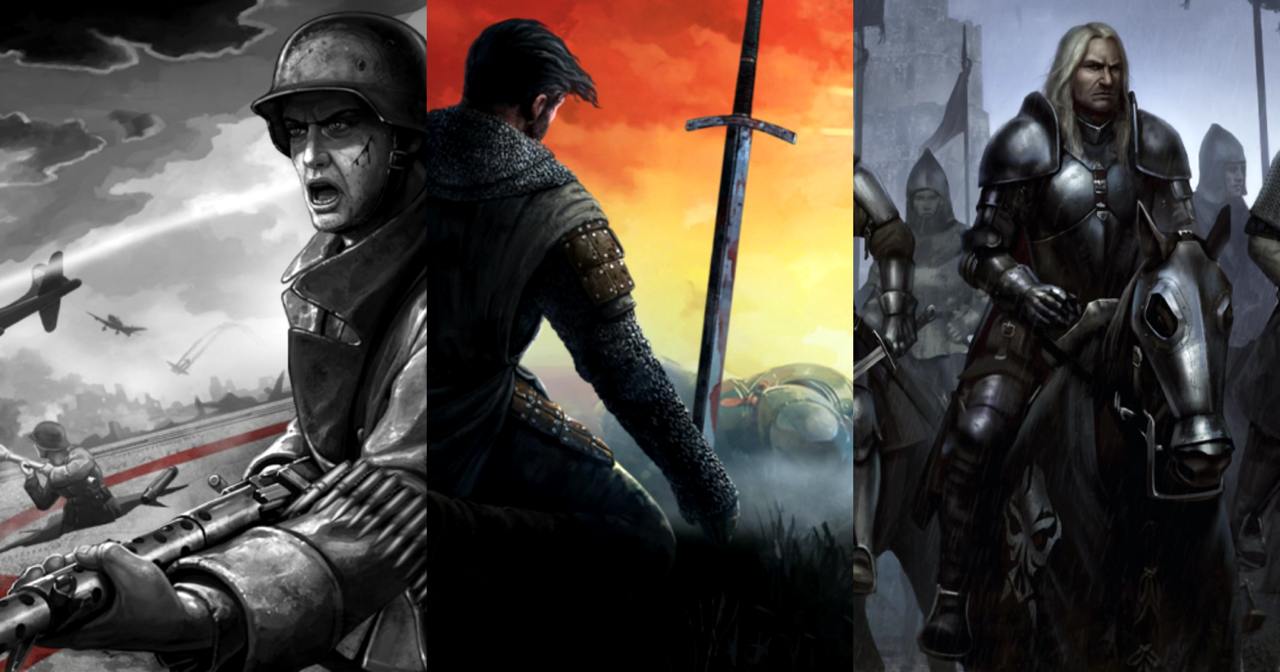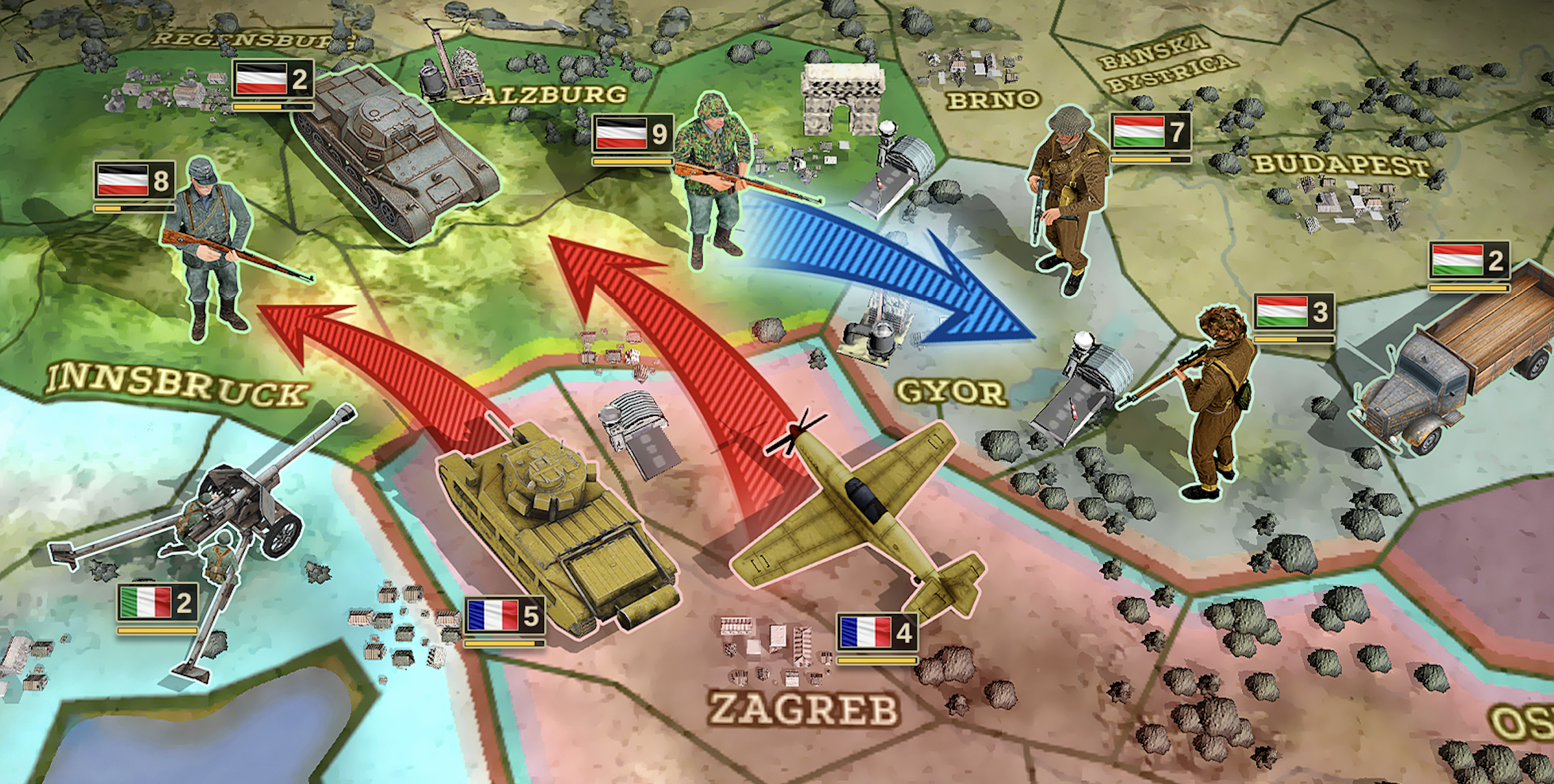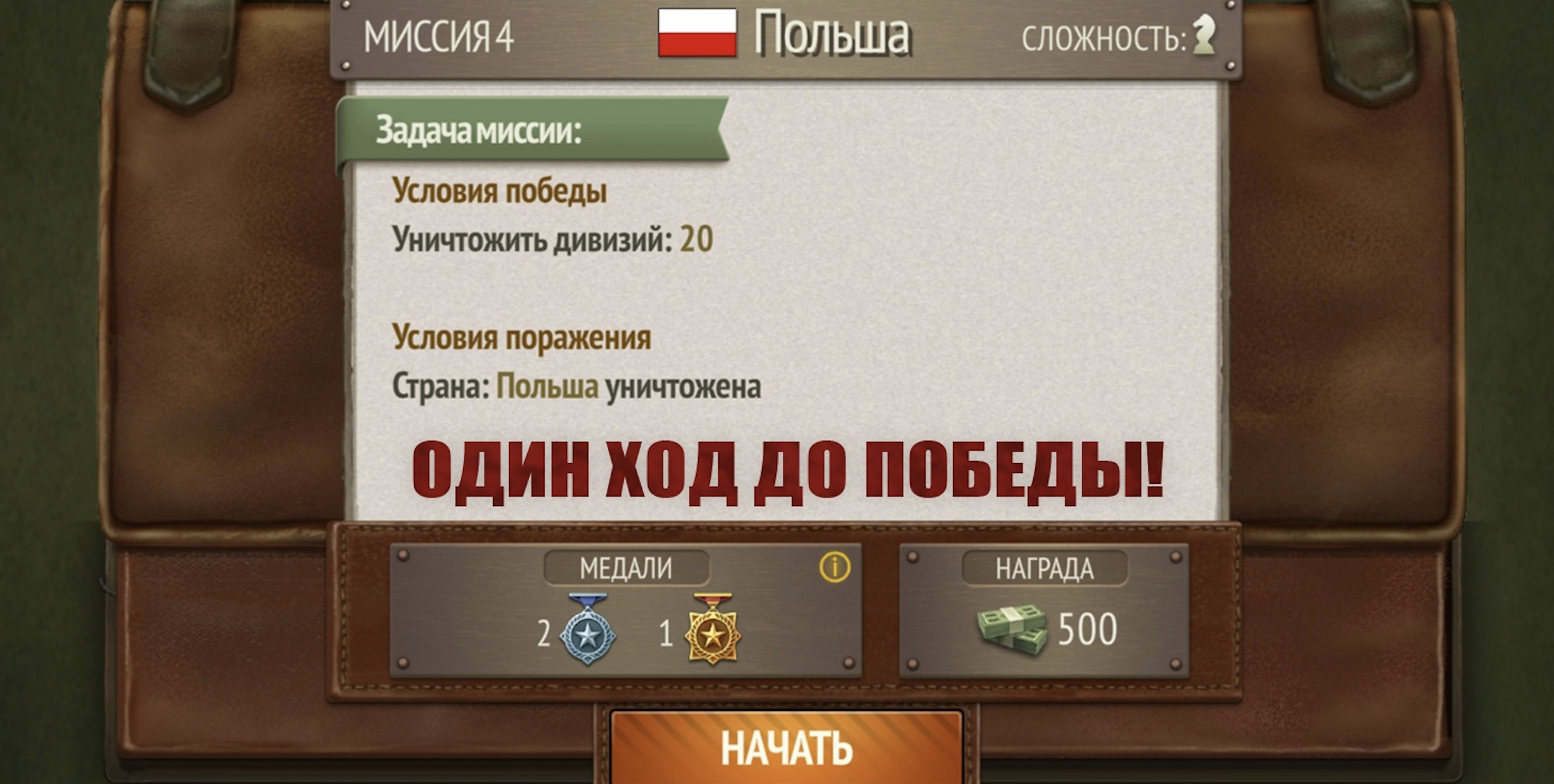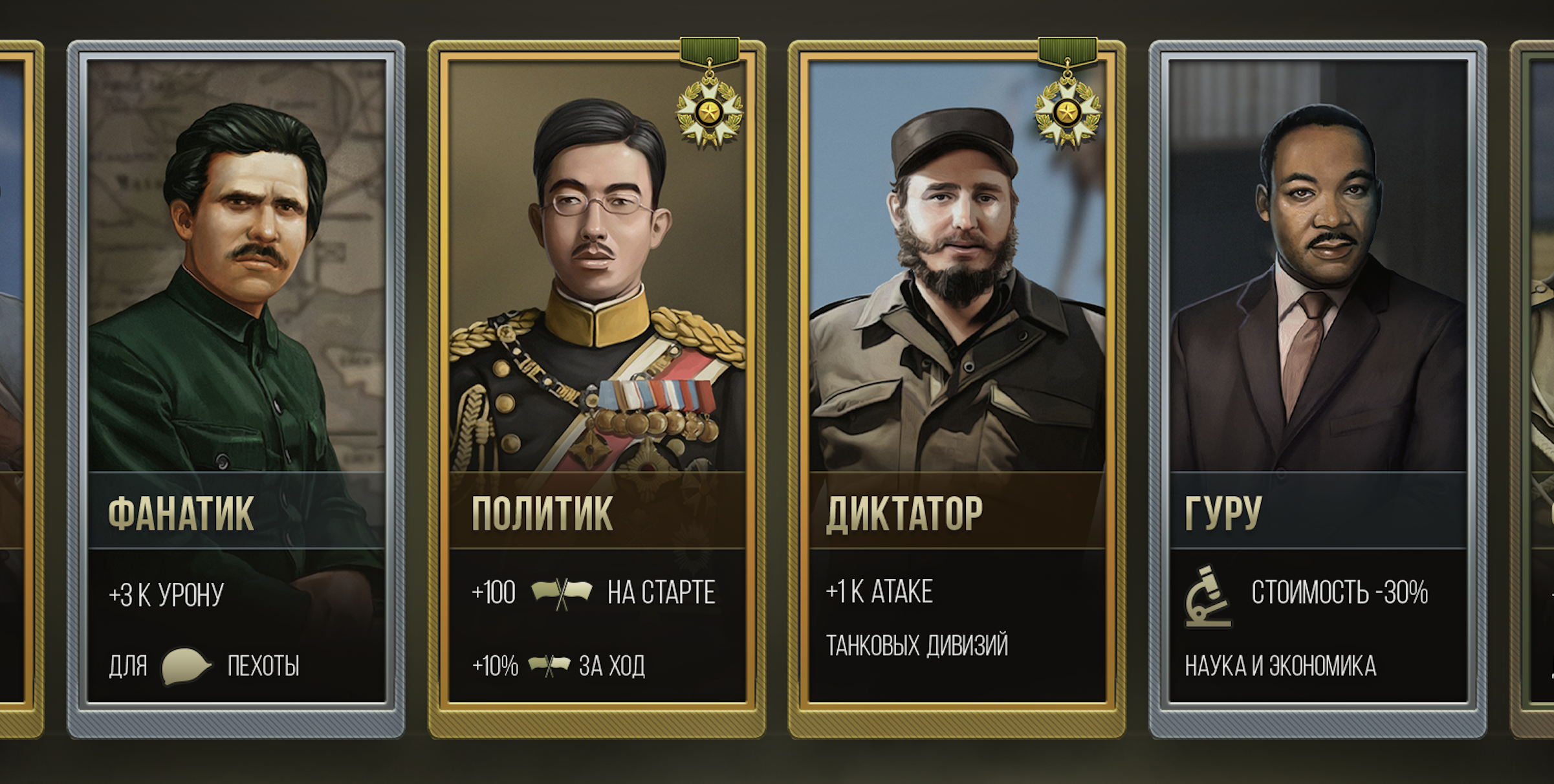Recently, a new mobile game by Strategy Park and HeroCraft, Strategy & Tactics: Blitz, was released. We spoke with the game developers about monetizing hardcore projects and specific production features.
Alexander Semenov, App2Top: Hi. Let's start with a few words about you. How long have you been in the industry, and what is your role in the project?
Pavel Kostin
Pavel Kostin, HeroCraft: I've been in game development for over 15 years. At HeroCraft, I'm in charge of production overall, and for this project, I also oversee the publishing side.
Georgy Erhan
Georgy Erhan, Strategy Park: I've been in the industry since 2006. I head Strategy Park and am responsible for development on this project.
The Strategy & Tactics series has a long history. As far as I remember, the first part was developed over 10 years ago as a mobile version of Hearts of Iron. What has the series achieved over the years?
Georgy: Just last week, I found the initial concept document we pitched to Paradox Interactive on April 23, 2009! Back then, we obtained the rights for mobile versions of Majesty and Hearts of Iron. We managed to develop and release Majesty, but the HoI Mobile contract ended a couple of months before launch, requiring us to rename the game.
The game recouped its development budget within the first month post-launch. After that, we created several more games in the series. Unfortunately, we didn't manage the operations fully at the time, focusing instead on sequels, add-ons, and reskins. Some were very successful, while others failed. The last project in the series was released in 2017.
Overall, they gathered a few dozen million installations, but most importantly, the series gained fans and followers. The most dedicated among them awaited a complete second part, which launched in 2022.
During the beta stage, 250,000 players joined the project via HeroCraft's social networks and forums of previous series games. Amusing numbers for casual and hyper-casual games, but for mobile hardcore...
Strategy & Tactics 2
By the way, what's the audience for the project now?
Georgy: To avoid NDA-protected territory, I'll speak in terms of installs. On Android — 2.5 million organic, on iOS the numbers are, of course, more modest. The top five countries by downloads are Russia, Germany, China, Ukraine, and the USA.
Creating and developing a hardcore strategy game for mobile platforms is always a challenge. Expensive traffic, a small audience of paying users, high production demands. What would you highlight as a challenge when working with mobile, based on your experience operating Strategy & Tactics?
Pavel: A hardcore strategic project is, well, a niche product, indeed. It has its peculiarities, but also advantages. We consider Strategy & Tactics to be a well-established brand with its audience. Time to make a movie with MinCult's funds.
Strategy & Tactics: WWII Sandbox / Strategy & Tactics: Medieval Wars / Strategy & Tactics: Dark Ages
Yes, our audience is indeed challenging and very demanding. However, our players are smart and loyal. They are willing to pay for what they like, not because they were "coaxed into spending."
Regarding traffic — frankly, the most expensive traffic is in farming games and match-3. You can try to guess in the comments — why.
When it comes to attracting players to our strategy games — we know how to handle it. We actively use cross-promotion between games, work with the community, and maintain several groups in social networks — the release won't miss its target audience. Everyone will see it, download it, and express their opinion (and if not — feel free, we're listening).
Georgy: I would highlight two problems — staffing and monetization.
Monetizing hardcore strategies and skill-based PvE games is a real challenge. The audience for such projects wants to win through their intellect and understanding of the gameplay. We recognize and respect these demands: no pay-to-win, any non-paying user can win through skill alone.
The problem is that when a player loses and sees the in-game store and IAPs, they immediately conclude — "just another pay-to-win grind, you can't win without paying." They do not believe they're at fault for losing and suspect the developer of "unfair play." Convincing them otherwise is very difficult, but we try.
Staffing is also challenging: the majority of developers we hire previously worked on casual, at best mid-core. They simply don't understand how to create hardcore like ours for a mobile audience. We have to train them from scratch.
What makes your hardcore so different from the usual mid-core?
Georgy: Almost everything: the number of mechanics, their complexity, their interconnections. The player needs to manage dozens of elements, each containing several sub-elements. It's all about calculations and choices.
Thus, when a new game designer joins us, it takes them several months just to get acquainted with the entities used to set up a standard game scenario.
A programmer might work for a year and not even touch significant layers of mechanics and systems.
And now add historical accuracy to the mix. For mid-core, it's acceptable to work "in the setting." We work with historical experts. Game designers study these nuances as well as political, geographical, and economic reference materials.
In our medieval strategy game, you won't see Vikings in horned helmets or knights in full armor in the 10th century. No, we study the specific periods when a bascinet was used or when a sallet appeared.
Despite all these challenges and complexities, you continued and continue to work with this genre on mobile. This means you've found your niche and audience. How would you characterize them?
Georgy: In recent years, we've refined our understanding of what and for whom we're developing. We create mobile skill-based strategies for those who, for one reason or another, cannot play them on other platforms.
Is it traditionally men over 30, or are there data that could break that stereotype?
Georgy: If we consider the profile of the paying user, then yes — it's an adult male with a child, a beard, and a rifle. From somewhere like Texas or the English suburbs.
A significant portion of the audience is schoolkids who don't have a powerful computer or console but have a need for hardcore. They tell us: "Thank you, now I can play HoI (Hearts of Iron), even though I don't have a computer."
How do you typically solve issues related to the niche nature of the Strategy & Tactics franchise, such as its limited audience and monetization?
Georgy: It's not just us solving the audience question, but the entire gaming industry together. It's evolving! Year after year, we see the share of mid-core and hardcore segments growing in mobile games. Nowadays, you can make a game with any complexity of gameplay, and if you can provide convenient UX, you'll surely find an audience for this project on mobile devices.
On our side, we are constantly testing numerous ideas and approaches: settings, mechanics, UA creatives, monetization tactics, LiveOps practices.
So, the key success factor is convenience?
Georgy: Let's break it down. Take the Switch or Steam Deck. They're already playing "real" games. Hardware-wise, they're comparable to smartphones. The main difference is screen size — it's bigger than on smartphones but smaller than on tablets. So the key difference lies in UX and controls.
How elastic is the hardcore mobile game niche today? Are there prospects for its expansion, and is there room for competitors?
Pavel: The prospects for its expansion are significant! Potentially, it could interest all genre fans from PC and consoles. This is a huge audience.
It was once believed that nothing serious could be done on phones. But we tried, and people appreciated it. We see other attempts in the genre now (genuine enthusiasts are few, but people try, and we respect that).
The Strategy & Tactics series is an analog to mature strategies on PC. It's trying to be just that. We'll expand by proving to adult strategists on PC/consoles that mobile strategies are no less serious.
But considering economic and geopolitical strategies are among the highest-grossing genres on PC, why does mobile still consider this a niche area?
Pavel: Just pitiful stereotypes! Mobile platforms have a (rightfully) poor reputation among serious gamers because of the general app store content and the developed free-to-play segment.
Traditional mobile monetization systems can't be avoided, and they're poles apart from players who deftly handle the fourth Hearts of Iron with their eyes closed.
Additionally, purchasing a hardcore game for $60 on a phone isn't going to happen. So we go on. We're delighted when people comment — okay, unexpectedly, this is a solid strategy.
Now let's talk a bit about your new release — Strategy & Tactics: Blitz. It seems like an experiment, a departure from the core of your series.
Strategy & Tactics: Blitz
Georgy: Precisely, this project is yet another experiment. We're testing hypotheses and methodologies that we want to apply at another level in the future.
Another similar experiment is our other title, launching in soft launch this year. It's a strategy set in the medieval period, even more hardcore than Strategy & Tactics.
At Strategy Park, we have a small team, but we can create games very quickly. We have an idea — we have a game. For Strategy & Tactics: Blitz, from the idea's inception to the final release build cleared by QA, it took five months. For Medieval Strategy — 11 months. These projects were developed in parallel, while we continuously released updates for Strategy & Tactics 2 and launched a large PC project.
Out of curiosity, how many of you are there?
Georgy: There are 17 of us right now. We aspire to grow, but we simply can't find people.
Looking purely at the screenshots, the game seems to meet series standards, but on closer inspection, it feels quite different. How?
Georgy: In just a few moves (sometimes even one), we challenge players to solve specific tasks: capture a province, destroy enemy troops, win a specified number of times. There's no economy, diplomacy, or science. Pure military tactics!
Strategy & Tactics: Blitz
This seems like quite a significant deviation from the series canon. Roughly speaking, instead of 4X, you're now offering a simplified wargame. Are you worried about losing your audience?
Pavel: It depends on how you look at it. Is a three-move chess problem by Lasker a simplified wargame too? Strategy & Tactics: Blitz are studies from the Strategy & Tactics world, which help either relax from the intense Strategy & Tactics 2 or, conversely, understand the mechanics to then immerse in the major game fully.
For our traditional audience, the new project isn't a competitor to Strategy & Tactics 2, but a game that can be completed in a few days (in gold, of course, if you're skilled), feel the satisfaction of solving tasks, and then return to the larger game with long campaigns and massive meta-game. Thus, no, the audience won't be lost. We hope that instead, everyone will find a challenge they enjoy.
Strategy & Tactics: Blitz
Georgy:: Blitz is definitely not a game for hardcore Paradox Interactive fans. On the contrary, we believe this project might be an easy entry point for players who haven't experienced grand strategy and large wargames yet.
On PC, the wargame genre is always about mind games. In this context, it's a bit unclear how such a project can be monetized. Please, tell us about that.
Georgy: Yes, many free-to-play practices are met with resistance by our players. Since the series' first games, we've been experimenting with different options, trying to identify approaches that would best suit our audience.
We now follow a model where we sell players through IAPs what strategy games in Steam sell through DLC — content: new countries, regions, scenarios, as well as new characters and units. That's what we sell.
Strategy & Tactics: Blitz
Regarding how we sell it, I'd like to highlight our approach to personalizing offers.
We have launched and are currently refining a system where each player receives a customized set of offers. We aim for the game to have no single universal store. Instead, each player will have a store tailored to them, their interests, and expectations.
One perhaps less obvious point: we actively use advertising monetization. Hardcore players are more amenable to ads than to in-game payments. At the same time, we're not worried about players migrating to other projects because there are no direct competitors.
As we wrap up our conversation, what are your expectations for the project? Do you anticipate that the new project, designed for much shorter sessions, could be more successful than the first two parts of the series?
Georgy: More successful — definitely not. I repeat, Blitz is purely experimental in several areas. Gathering information and understanding our audience and genre even better — these are our goals. Whether our hypotheses are confirmed or not — we will gain new insights and enhance our expertise. In any case, success is inevitable for us!
Good luck then! Thank you for the interview!




